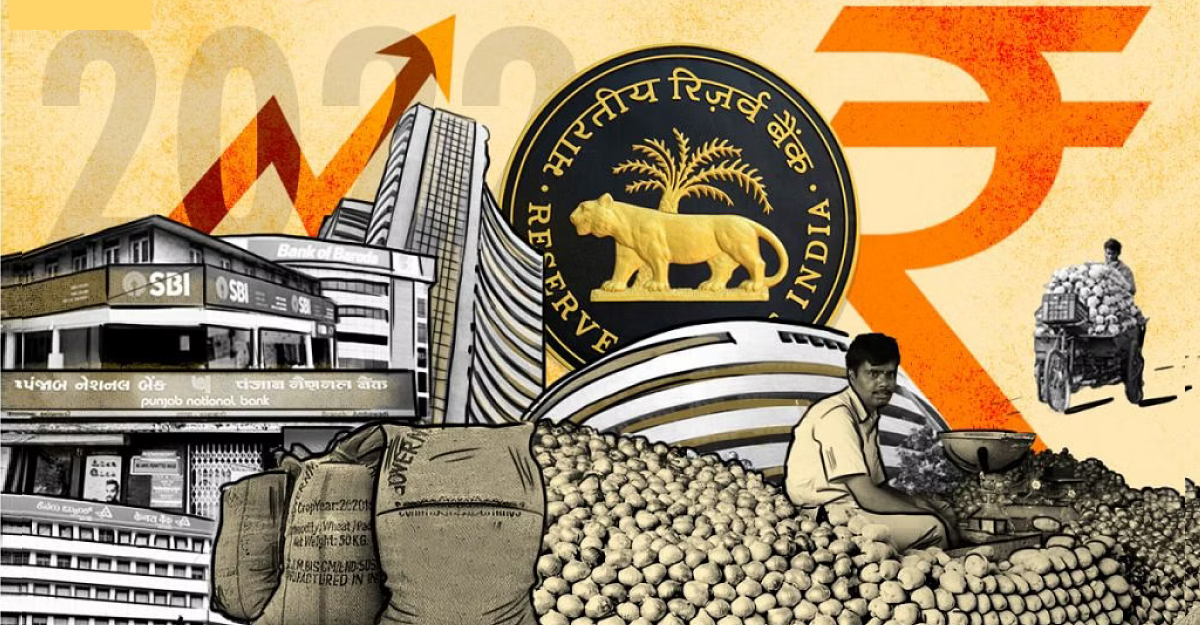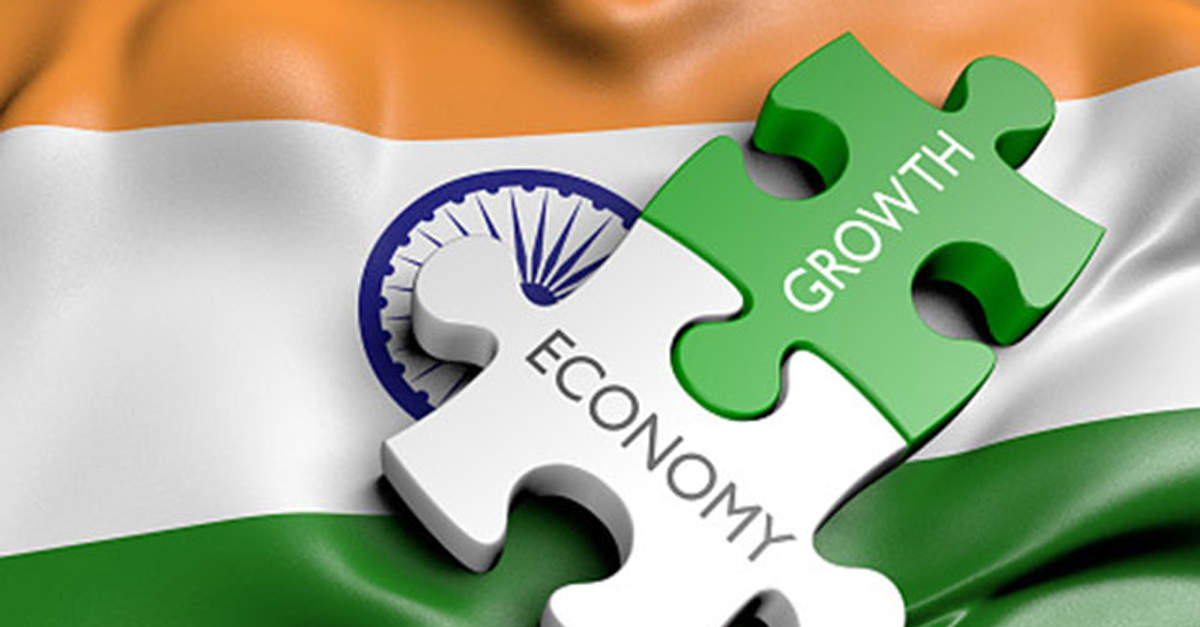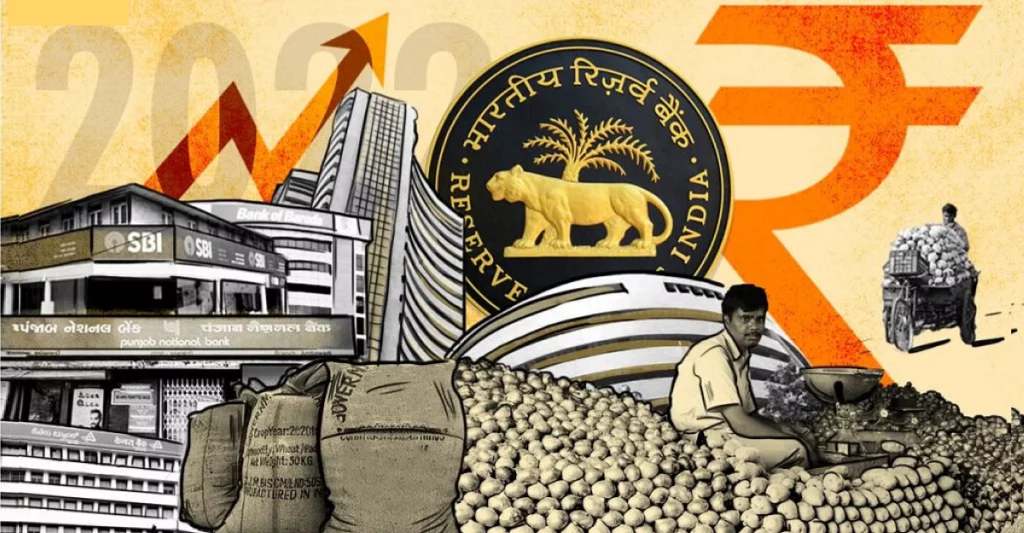When you hear the term “Hindu rate of growth,” it might sound strange, right? It doesn’t mean anything directly related to Hinduism. This phrase is actually about India’s economy, and it goes back to a period when India’s economic growth was notoriously slow.

If you’ve ever wondered why economists still talk about it today, you’re in the right place. Because we will break it down in this write-up.
Here we go!
What is the Hindu Rate of Growth?
The “Hindu rate of growth” is a term coined by economist Raj Krishna in 1978. It describes the period from the 1950s to the 1980s when India’s economy grew at an average rate of around 3.5% per year.
This was incredibly slow compared to other countries that were rapidly industrializing and growing their economies. While countries like South Korea, Taiwan, and Singapore were speeding ahead, India seemed stuck in the slow lane.
But why call it the “Hindu” rate of growth? You ask.
Raj Krishna and some other economists at the time associated the slow growth with a supposed mindset of fatalism and contentment found in Hindu culture. They suggested that this attitude might be a reason for the sluggish pace.
However, over the years, many have criticized this explanation. Today, economists argue that it wasn’t Hinduism or a cultural mindset that caused the slow growth; it was India’s economic policies.
Why was India growing so Slowly?
To understand this slow growth, we need to look at India’s economic policies during that period. After gaining independence in 1947, India adopted a model of economic planning similar to the Soviet Union. This was known as the “five-year plan model”, where the government took a central role in directing the economy.
The Indian government implemented protectionist policies, meaning they tried to protect domestic industries from foreign competition by imposing high tariffs and trade restrictions.
The government also owned many key industries like steel, coal, and telecommunications. This might sound like a good idea for self-reliance, but it led to inefficiency and a lack of competition.
The result?
India’s economy grew at a snail’s pace, averaging a 3.5% growth rate, which came to be known as the Hindu rate of growth.
Economic Liberalization: The Game-Changing Move

Everything changed in the early 1990s. Facing an economic crisis, India was forced to liberalize its economy. The government reduced its role in the economy, encouraged private businesses, and opened up to foreign trade and investment.
Guess what?
The Indian economy took off. From the 1990s onward, India saw growth rates of 6-9%. The slow growth of the past became history—or did it?
Why are we talking about the “Hindu Rate of Growth” again?
Fast forward to today, and some experts are worried that India might be slipping back toward a modern version of the “Hindu rate of growth.” Former Reserve Bank Governor Raghuram Rajan made headlines in 2023 when he warned that India’s growth rate was “dangerously close” to the old Hindu rate.
He wasn’t talking about 3.5% growth, but something close to 7%…
Now, you might think, “Wait, 7% growth sounds pretty good!” And you’d be right—7% is much higher than 3.5%. But here’s the catch- for a country as large and populated as India, 7% growth isn’t enough. India needs much faster growth to create enough jobs, raise incomes, and improve the standard of living for its billion-plus population.
We will discuss it thoroughly in the upcoming sections.
What’s Slowing Down India’s Growth Today?
Economists have identified several factors that are slowing down India’s growth-
1. Subdued Consumption
Consumption is one of the main drivers of economic growth. But rural consumption, which had taken a hit during the pandemic, hasn’t fully recovered.
Urban consumption, on the other hand, is showing signs of weakness. People are spending less, even on basic goods like shampoo and biscuits. With high inflation and slow salary growth, there’s simply less money for people to spend on non-essential items.
2. Sluggish Investment
When companies aren’t confident about future demand, they hesitate to invest in new capacity. Right now, India’s capacity utilization rate—a measure of how much of the country’s industrial capacity is being used—has been stuck at around 75-76% for several quarters. Normally, companies start investing more when this number is high, but that isn’t happening.
On top of that, high interest rates are making it expensive for companies to borrow money, which is causing many businesses to cut debt rather than invest in growth.
3. Weak Exports
India’s exports haven’t grown much as a share of GDP in the last decade. The “Make in India” campaign has boosted electronics manufacturing, and companies like Apple are now producing more goods in India.
But that’s not enough!
India’s share in labor-intensive exports, like textiles and apparel, has actually decreased. This is worrying because countries like Bangladesh and Vietnam are gaining market share in these sectors.
The New Hindu Rate of Growth isn’t Enough
As discussed in the previous section, India’s economy is stuck in a new version of the New Hindu growth rate. This time it is around 6.5% to 7%. And the reason is that none of the following country’s growth engines are firing on all cylinders.
- Consumption is weak, both in rural and urban areas.
- Investment is sluggish because companies are hesitant to expand, and borrowing is expensive.
- Exports aren’t growing fast enough, especially in labor-intensive sectors like textiles and footwear.
- Government spending can’t keep increasing at breakneck speed, especially with budget deficits to manage.
What can be done?
To avoid being stuck at 7% growth, India needs some tough reforms. Economists suggest that both the central and state governments need to act. Land and labor reforms are crucial, but these can be politically painful.
On top of that, India’s infamous bureaucracy needs to be streamlined to make it easier for businesses to operate.
Manufacturing needs a bigger push too, not just in flashy sectors like electronics but also in traditional labor-intensive industries. India can’t afford to let smaller economies like Bangladesh and Vietnam steal the show when it comes to industries like textiles and apparel.
Final Words: Why India can’t settle for 7% growth?
So, where does all of this leave us? The term “Hindu rate of growth” might have started in the 1970s to describe an era of slow growth, but it’s making a comeback. And while today’s growth rate of 7% is better than the 3.5% of the past, it’s still not enough for a country like India.
If India wants to improve the lives of its citizens, create more jobs, and compete globally, it needs to aim higher. That means difficult reforms, smarter investments, and a renewed focus on both manufacturing and services.
Otherwise, India risks being stuck in a new version of the “Hindu rate of growth,” and that’s not where a country with as much potential as India should be.
We’ve come a long way since the 1950s, but there’s still a lot of work to do!

